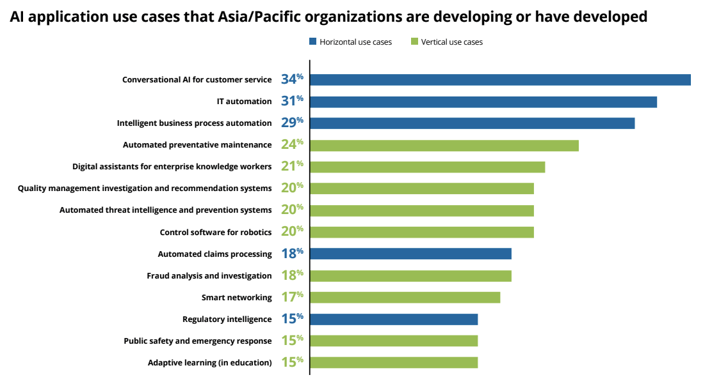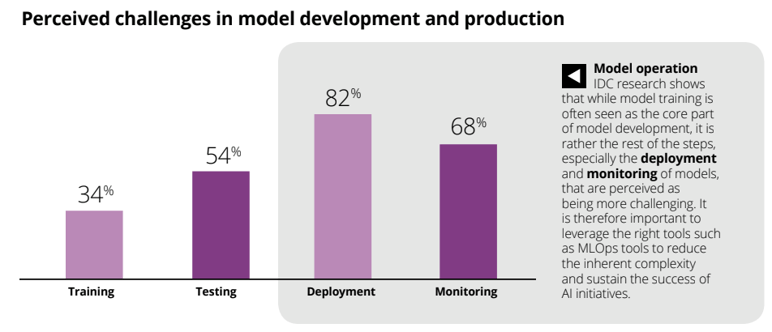Around the world, organizations’ strategies and roadmaps have been rocked by shifting global events, but how does AI fit into the mix? It turns out companies have largely leaned into AI efforts as a solution to provide increased agility in turbulent times, and it seems the APAC region is no exception.
Since the release of the 2020 IDC InfoBrief sponsored by Dataiku and with the release of the 2021 IDC InfoBrief, we have seen nearly twice as many companies starting their AI journey. Plus, those that had already started are showing more AI maturity, experimenting less and executing more repeatedly and in a more coordinated way.
Highlights: AI Practices that Deliver Results
Here are some of the top highlights from the 2021 IDC InfoBrief, including trends and best practices in AI maturity for APAC for 2021-2022 and beyond.
No Lack of Vision (or Use Cases)
Before the global health crisis, leaders believed in AI as a strategic investment for their line of business. Though motivation varied depending on the sub-geography within APAC and the industry, overall, this vision was driven by the promise of greater productivity, improved agility, and enhanced customer satisfaction. In 2021, this eye to the future and willingness to invest has remained relatively unchanged, even in the face of unprecedented, worldwide economic instability.
To be clear, this doesn’t mean every company is investing in AI — the number of “AI-free” organizations in APAC remains high (61% vs. 80% in 2020). But for those that have, there is no shortage of profitable use cases. Top use cases among APAC businesses investing in AI range from broad, horizontal projects that span multiple business lines and industries to more tailored, vertical-specific use cases.

Source: IDC AI Maturity Survey, APEJ 2020 (N=552)
As Complexity Increases, Need for Process Increases in Parallel
One of the most important trends in 2021 for APAC is the increasing importance of processes that ensure systematic execution and continuous improvement of AI systems. Given the context — the overall maturity of companies that have invested in AI has increased, with half of companies in stage three or four now, as opposed to stage one or two in 2020 — this makes sense.
More models in production means more complexity, which leads to the need to "standardize and monitor data, models, and business operations for effective communication, tracking, learning, and adaptation of AI implementations.” It all comes down to mitigating risk, and part of the answer is ensuring that AI governance is sound.
 Source: IDC AI Adoption Survey, APEJ 2019 (N=710)
Source: IDC AI Adoption Survey, APEJ 2019 (N=710)
Going hand-in-hand with increased process maturity is a shift in organizational structure or operational models for AI. Centralized centers of excellence (CoE) naturally give way to hub-and-spoke models to distribute knowledge and AI know-how across the organization, though the centralized model is still popular. For example, in 2019, only 24% of AI-skilled staff were residing with groups such as CoEs, whereas today that is the case for 44% of AI-skilled staff.
Technology Is Still an Important — but Not the Only — Piece of the Puzzle
The role of data, people, technology, and process varies with organizations’ maturity. People and processes tend to make the difference for organizations that are just starting or maturing in their AI journey, while data comes on top to help companies reach a more optimized stage. For example, the average data readiness score of APAC organizations that have invested in AI is just 2.6 out of 5, which indicates sizable room for improvement.
When it comes to technology, 43% of organizations investing in AI have implemented an enterprise platform like Dataiku to consolidate resources. On top of this, cloud has some added value in the AI technology space, offering better data mobility, interoperability, and scalability. Deploying an enterprise analytics and AI platform plus embracing technologies that play end-to-end, making AI a team sport remain best practices for organizations in APAC and worldwide.





